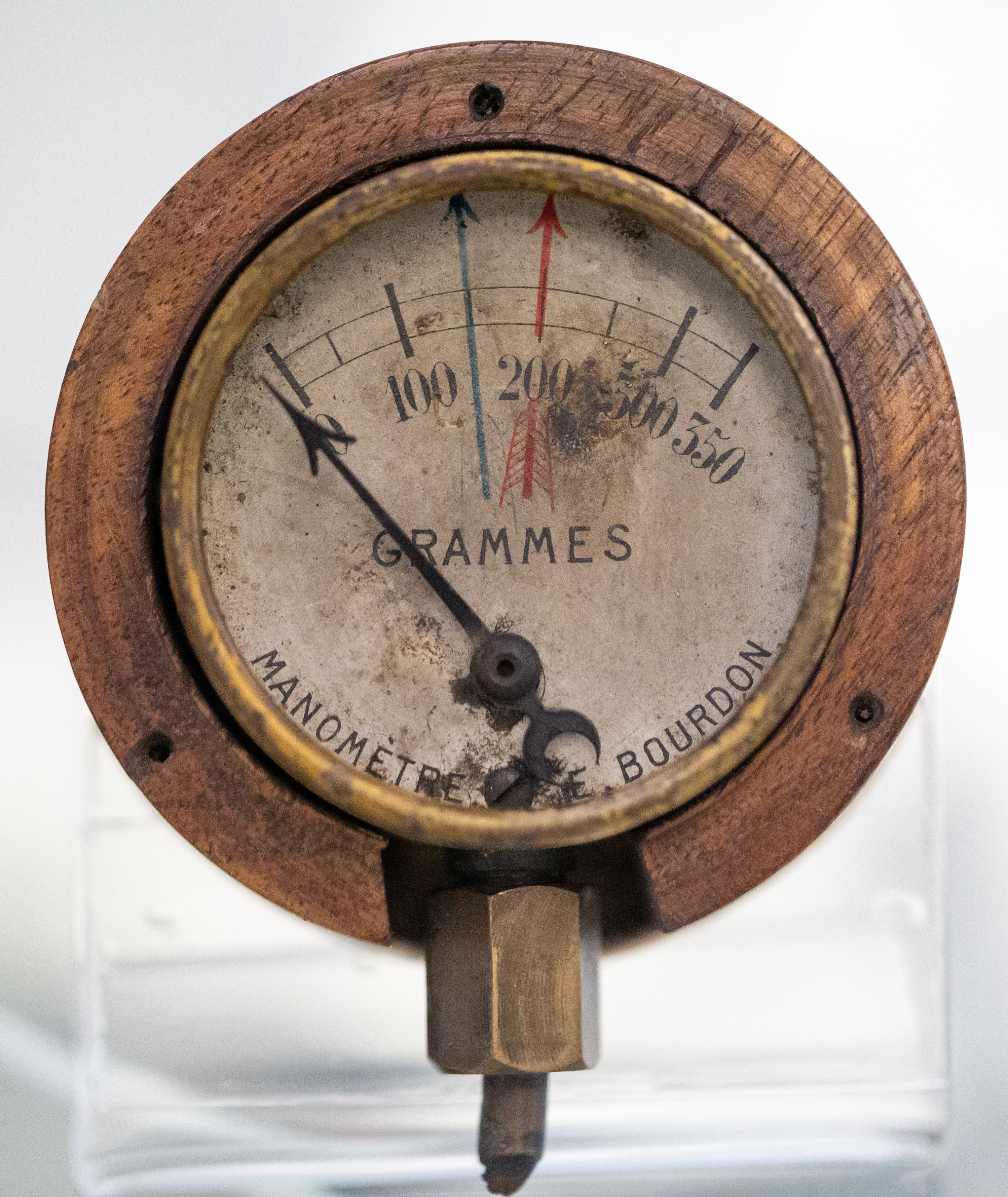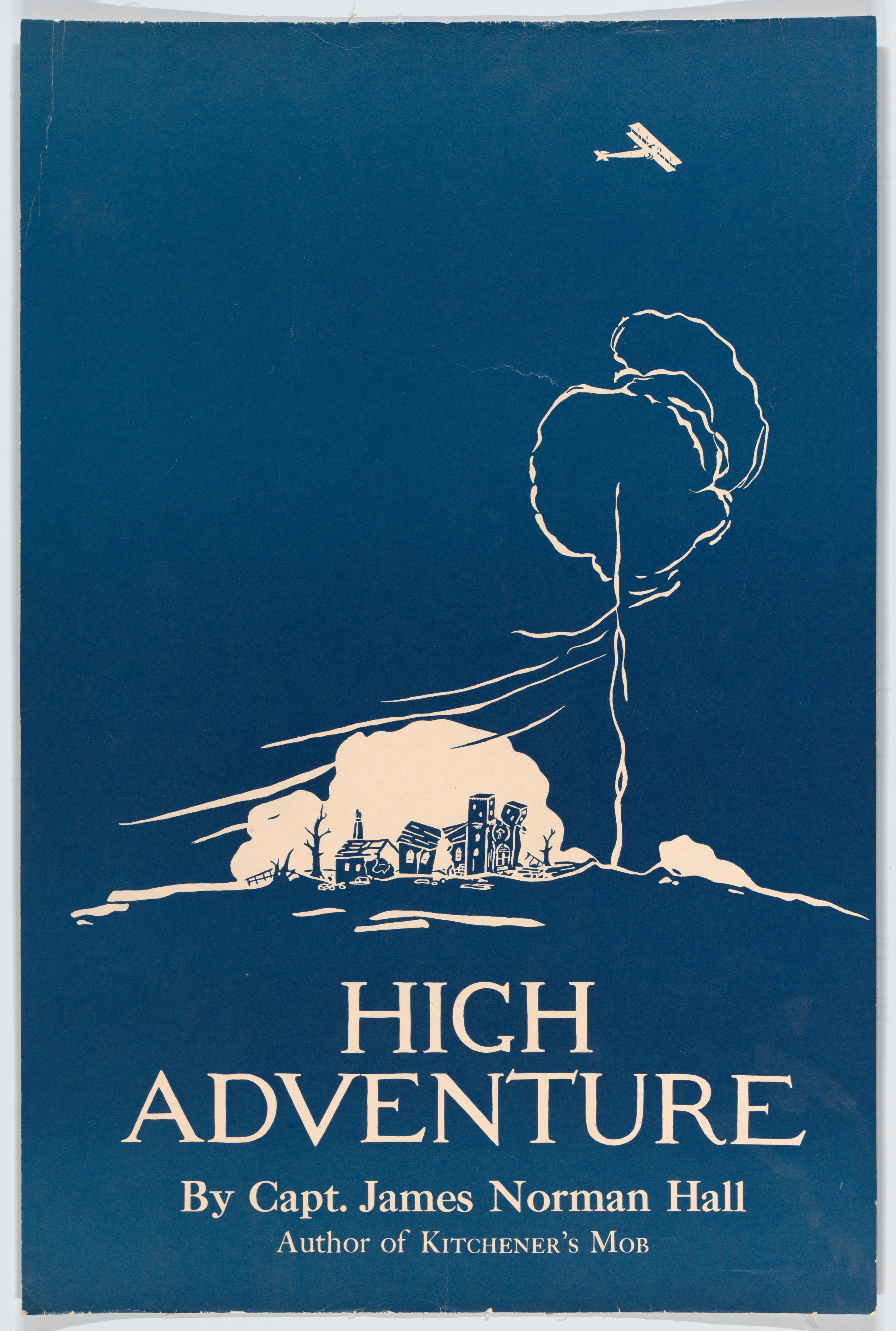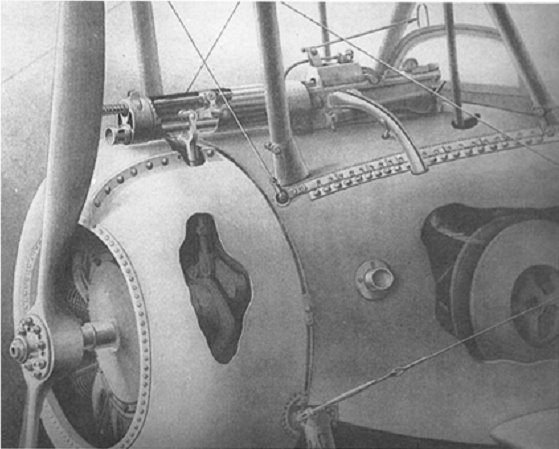|
Walter Lovell
Walter Lovell (September 9, 1884 – September 10, 1937) was a World War I volunteer pilot and an American serviceman. He was born in Newton, Massachusetts, to Wallace D. and Josephine (Hastings) Lowell. Walter attended Newton High School (now Newton North High School) and graduated from Harvard College with a Bachelor of Arts degree, class of 1907. He stayed in Boston and went into brokerage business after graduation. American Ambulance volunteer In January 1915, Walter Lovell departed for England on , and in February 1915, joined the American Ambulance Hospital Field Service, known also as the American Field Service, in France. In the spring of 1915, the French High Command authorized creation of foreign sanitary sections of the American Ambulance and allowed them to be sent to the Western Front as part of the French Army Automobile Service. Lovell was dispatched to Alsace and after six months became second in command of the American Automobile Sanitary Section N° 2 of the San ... [...More Info...] [...Related Items...] OR: [Wikipedia] [Google] [Baidu] |
Newton, Massachusetts
Newton is a city in Middlesex County, Massachusetts, United States. It is approximately west of downtown Boston. Newton resembles a patchwork of thirteen villages, without a city center. According to the 2020 U.S. Census, the population of Newton was 88,923. History Newton was settled in 1630 as part of "the newe towne", which was renamed Cambridge in 1638. Roxbury minister John Eliot persuaded the Native American people of Nonantum, a sub-tribe of the Massachusett led by a sachem named Waban, to relocate to Natick in 1651, fearing that they would be exploited by colonists. Newton was incorporated as a separate town, known as Cambridge Village, on December 15, 1681, then renamed Newtown in 1691, and finally Newton in 1766. It became a city on January 5, 1874. Newton is known as ''The Garden City''. In ''Reflections in Bullough's Pond'', Newton historian Diana Muir describes the early industries that developed in the late 18th and early 19th centuries in a series of mills b ... [...More Info...] [...Related Items...] OR: [Wikipedia] [Google] [Baidu] |
Willis Bradley Haviland
Commander Willis Bradley Haviland, (10 March 1890 – 28 November 1944) was a pioneer military pilot in World War I and a naval air station commanding officer in World War II. As the sixteenth American volunteer in the Lafayette Escadrille, he was among the first air combat pilots to fight the Germans in World War I, before the United States officially entered the war. He would later become the first pilot to launch a plane from a battleship.Unpublished Scrapbooks compiled by Willis Bradley Haviland. SeAn Earlybird's Scrapbookby grandson Willis Haviland Lamm Early life Born on 10 March 1890 in Minneapolis, Minnesota, Willis was the only son of Dr. Willis Henry Haviland (10 September 1864 – 15 January 1939) by his first wife, Grace Hynes. His parents divorced 28 June 1895, when he was only about 5 years old, and Dr. Haviland remarried to Mary Page Irvine on 22 Jul 1895 in Butte, Montana. Willis ... [...More Info...] [...Related Items...] OR: [Wikipedia] [Google] [Baidu] |
Armistice With Germany
The Armistice of 11 November 1918 was the armistice signed at Le Francport near Compiègne that ended fighting on land, sea, and air in World War I between the Entente and their last remaining opponent, Germany. Previous armistices had been agreed with Bulgaria, the Ottoman Empire and Austria-Hungary. It was concluded after the German government sent a message to American president Woodrow Wilson to negotiate terms on the basis of a recent speech of his and the earlier declared "Fourteen Points", which later became the basis of the German surrender at the Paris Peace Conference, which took place the following year. Also known as the Armistice of Compiègne (french: Armistice de Compiègne, german: Waffenstillstand von Compiègne) from the place where it was officially signed at 5:45 a.m. by the Allied Supreme Commander, French Marshal Ferdinand Foch, it came into force at 11:00 a.m. Central European Time (CET) on 11 November 1918 and marked a v ... [...More Info...] [...Related Items...] OR: [Wikipedia] [Google] [Baidu] |
William Thaw II
Lieutenant Colonel William Thaw II () was an American combat aviator who served in World War I and became a flying ace. Credited with five confirmed and two unconfirmed aerial victories, he is believed to be the first American to engage in aerial combat in the war. He was the first to fly up the East River under all four bridges. Early life He was born on August 12, 1893, to Benjamin Thaw, Sr. He learned to fly in 1913, while he was attending Yale University. His father bought him a Curtiss Hydro flying boat that he took to France for the Schneider Trophy races. When war broke out, Thaw gave his airplane to the French and enlisted in the Foreign Legion. Military career He joined ''Escadrille 6''. He then became a corporal in ''Escadrille 42'' in 1915, flying a Caudron. He flew a Nieuport in '' Escadrille 65'', before transferring into a French unit composed of American volunteers, known as the Escadrille Americaine, Escadrille 124 under its new designation became nicknamed the ... [...More Info...] [...Related Items...] OR: [Wikipedia] [Google] [Baidu] |
Raoul Lufbery
Gervais Raoul Victor Lufbery (March 14, 1885 – May 19, 1918) was a French and American fighter pilot and flying ace in World War I. Because he served in both the French Air Force, and later the United States Army Air Service in World War I, he is sometimes listed alternately as a French ace or as an American ace. Officially, all but one of his 17 combat victories came while flying in French units. Early life and service Raoul Lufbery was born at Avenue de la Poudrière in Chamalières, Puy-de-Dôme, France to American Edward Lufbery and a French mother. Lufbery's paternal grandfather was Charles Samson Lufbery, who had emigrated to the United States from Great Britain in the mid-19th century and settled in New York. Lufbery's father, Edward moved to Chamalières in 1876, joining his elder brother, George and soon met a local Frenchwoman, Anne Joséphine Vessière, who would later become his wife.Lafayette Escadrille: America's Most Famous Squadronp. 36 Raoul was the youngest ... [...More Info...] [...Related Items...] OR: [Wikipedia] [Google] [Baidu] |
Color Blindness
Color blindness or color vision deficiency (CVD) is the decreased ability to color vision, see color or differences in color. It can impair tasks such as selecting ripe fruit, choosing clothing, and reading traffic lights. Color blindness may make some academic activities more difficult. However, issues are generally minor, and the colorblind automatically develop adaptations and coping mechanisms. People with achromatopsia, total color blindness (achromatopsia) may also be Hemeralopia, uncomfortable in bright environments and have visual impairment, decreased visual acuity. The most common cause of color blindness is an Heredity, inherited problem or variation in the functionality of one or more of the three classes of cone cells in the retina, which mediate color vision. The most common form is caused by a genetic disorder called congenital red–green color blindness. Males are more likely to be color blind than females, because the genes responsible for the most common for ... [...More Info...] [...Related Items...] OR: [Wikipedia] [Google] [Baidu] |
James Norman Hall
James Norman Hall (22 April 1887 – 5 July 1951) was an American writer best known for '' The Bounty Trilogy'', three historical novels he wrote with Charles Nordhoff: ''Mutiny on the Bounty'' (1932), '' Men Against the Sea'' (1934) and '' Pitcairn's Island'' (1934). During World War I, Hall had the distinction of serving in the militaries of three Western allies: Great Britain as an infantryman, and then France and the United States as an aviator. His awards include the Croix de Guerre, the Médaille Militaire, the Légion d'Honneur and the Distinguished Service Cross. After the war, Hall spent much of his life on the island of Tahiti, where he and Nordhoff wrote a number of successful adventure books, many adapted for film. He was also the father of Conrad L. Hall, regarded as one of the ten most influential cinematographers in film history. Biography Hall was born in Colfax, Iowa, where he attended the local schools. His early home is listed on the National Register of His ... [...More Info...] [...Related Items...] OR: [Wikipedia] [Google] [Baidu] |
Albatros D
An albatross is one of a family of large winged seabirds. Albatross or Albatros may also refer to: Animals * Albatross (butterfly) or ''Appias'', a genus of butterfly * Albatross (horse) (1968–1998), a Standardbred horse Literature * Albatross Books, a German publishing house that produced the first modern mass market paperback books * Albatros Literaturpreis, a literary award * "L'albatros" (poem) ("The Albatross"), 1859 poem by Charles Baudelaire * ''The Albatross'', a 1971 novella by Susan Hill * ''The Albatross'', the fictional propeller-sustained airship in Jules Verne's novel ''Robur the Conqueror'' * ''Albatross'' (novel), a 2019 novel by Terry Fallis Film and television * Films Albatros Films Albatros was a French film production company established in 1922. It was formed by a group of White Russian exiles who had been forced to flee following the 1917 Russian Revolution and subsequent Russian Civil War. Initially the firm's pe ..., a French film productio ... [...More Info...] [...Related Items...] OR: [Wikipedia] [Google] [Baidu] |
SPAD S
SPAD may refer to: In aircraft manufacture * Société Pour L'Aviation et ses Dérivés, also Société Provisoire des Aéroplanes Deperdussin and Blériot-SPAD, French aircraft manufacturer (1912–1921) * SPAD VII, SPAD S.XII and SPAD S.XIII, French fighter planes of World War I produced by Société Pour L'Aviation et ses Dérivés * A-1 Skyraider, nicknamed ''Spad'', an attack aircraft (1950s and 1960s) * Simple Plastic Airplane Design, a type of radio-controlled model airplane In science * Single Pass Albumin Dialysis, liver dialysis * Single-photon avalanche diode, a photodetector Other uses * Special adviser (UK), a government post * Self-propelled air defence, weapons * Signal passed at danger by a train * ''Suruhanjaya Pengangkutan Awam Darat'', the Land Public Transport Commission of Malaysia See also * Spade (other) A spade is a digging and gardening tool. Spade or Spades may also refer to: Cards * Spades (card game), a trick-taking card game *Spades (s ... [...More Info...] [...Related Items...] OR: [Wikipedia] [Google] [Baidu] |
Nieuport 17
The Nieuport 17 C.1 (or Nieuport XVII C.1 in contemporary sources) was a French sesquiplane fighter designed and manufactured by the Nieuport company during World War I. An improvement over the Nieuport 11, it was a little larger than earlier Nieuports and better adapted to the more powerful engine than the interim Nieuport 16. Aside from early examples, it had the new Alkan-Hamy synchronization gear, permitting the use of a fuselage-mounted synchronised Vickers gun firing through the propeller disc. At the time of its introduction in March 1916, the type's outstanding manoeuvrability and excellent rate of climb gave it a significant advantage over fighters on both sides and was described as "the best pursuit plane of the day". It was used by many operators and entered service with every Allied power and copies were also operated by the (German Air Service). Mass-produced by several French firms, the Nieuport 17 and its derivatives were built under licence in Italy by Nieupo ... [...More Info...] [...Related Items...] OR: [Wikipedia] [Google] [Baidu] |
Lafayette Escadrille
The La Fayette Escadrille (french: Escadrille de La Fayette) was the name of the French Air Force unit escadrille N 124 during the First World War (1914–1918). This escadrille of the ''Aéronautique Militaire'' was composed largely of American volunteer pilots flying fighters. It was named in honor of the Marquis de Lafayette, French hero of the American Revolutionary War. In September 1917, the escadrille was transferred to the US Army under the designation 103rd Aero Squadron. In 1921, The French Air Force recreated a N124 unit who claimed lineage from the war-time La Fayette escadrille and is now part of the escadron 2/4 La Fayette. History Dr. Edmund L. Gros, a founder of the American Hospital of Paris and organizer of the American Ambulance Field Service, and Norman Prince, a Harvard-educated lawyer and an American expatriate already flying for France, led the attempts to persuade the French government of the value of a volunteer American air unit fighting fo ... [...More Info...] [...Related Items...] OR: [Wikipedia] [Google] [Baidu] |
Robert Rockwell
Robert Rockwell (October 15, 1920 – January 25, 2003) was an American stage, film, radio and television actor. He is best known for playing the handsome, but awkward biology teacher Philip Boynton in the radio and television sitcom ''Our Miss Brooks'' opposite Eve Arden. Career A native of Lake Bluff, Illinois Rockwell studied at the Pasadena Playhouse, from which he obtained a master's degree. During World War II he enlisted in the US Navy for four years serving in Washington D.C. Dramatic roles often eluded him, however, after beginning his career as a contract player for Republic Studios he appeared, over his almost 50-year acting career, in more than 350 television episodes and, on stage, opposite José Ferrer in the 1946 Broadway production of ''Cyrano de Bergerac'', and with Ginger Rogers during the 1960s in a San Diego production of Whitfield Cook's play ''A More Perfect Union''. He appeared (uncredited) in the first '' Superman'' television show episode as Clark Ke ... [...More Info...] [...Related Items...] OR: [Wikipedia] [Google] [Baidu] |


.jpg)




